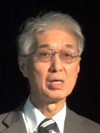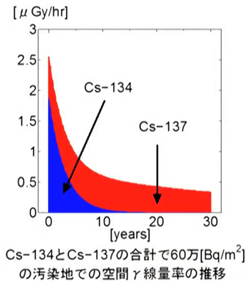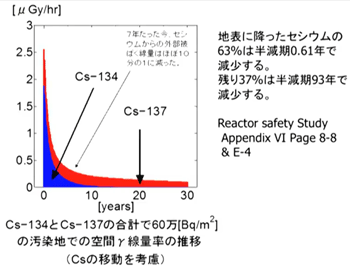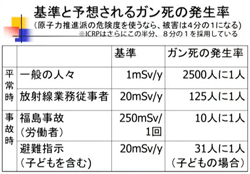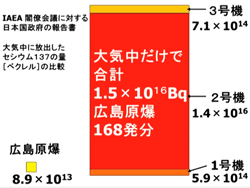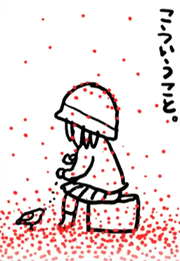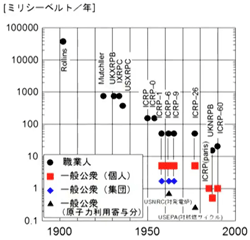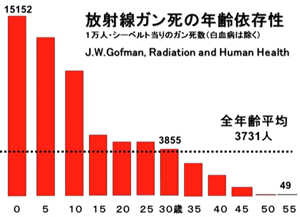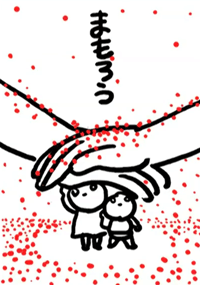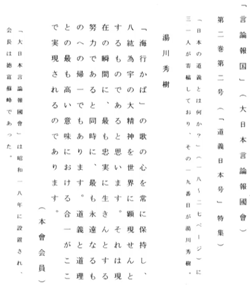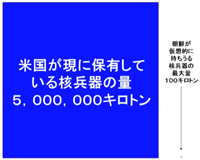>Top 2. How the radioactive materials polluted the environment:
- The amount of radioactive materials emitted:
- Japanese government reported to IAEA (International Atomic Energy Agency) the amount of Cs-137, most sensitive nuclear fuel product to human body, emitted in the air by the accident:
- Hiroshima A-bomb emitted: 8.9×1013 Bq (Becquerel, decays/sec)
- >Top Polluted Cs-137 by Fukushima N-plants disaster:
total 1.5×1016; 168 times of Hiroshima A-bomb.
(#1: 5.9×1014; #2: 1.4×1016; #3: 7.1×1014)
- The northern temperate westerlies blows out these nuclear fall-outs to the Pacific Ocean; more amounts of fall-out polluted not only the Pacific Ocean, but west coast of US, or almost around the earth.
- Rain which washed away and contained radioactive materials is called 'Black Rain'; also the same title of famous Japanese movie describing fear of the black rain in 1989.
- The same scene was repeated in Fukushima disaster, because it rained and snowed in the mostly contaminated area, particularly NW of Fukushima N-plants.
- More than 100K people were forced to evacuate from that area.
- After six years decontamination activities, J-government announced deregulation of yellow and blue painted areas and called the evacuators to return to their home, truncating support for evacuation; except the highly contaminated red zone.
- The center street, called 'Nakadori' penetrates Fukushima prefecture from north to south along the valley between Abukuma mountains westward and Ohu mountains eastward; The polluted area painted blue runs along this valley; along which there are such cities as Date, Fukushima, Nihonmatsu, Koriyama city, Sukagawa, and Shirakawa are located.
- The polluted area extends to Tochigi and Gunma prefectures, up to part of Saitama, and Tokyo. Most of these areas are similar or more polluted than the Radiation Controlled Area.
- >Top 2011/Mar/11:Special measures law of 'Declaration of Nuclear Emergency Situation' was announced. But after 7 years, this special measures law has not yet terminated. (just like under the martial law situation) Or even after 100 years this law will not be terminated. Half life of Cs-137 is 30 years, which means it takes 100 years to make Cs-137 decrease in 1/10.
- Even new born babies today will have to endure the continuation of declaration of nuclear emergency situation until 100 years future.
- Ordinary people: 1 mmSV/y.
|
2. 放射性物質による環境を汚染:
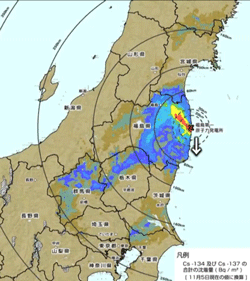
- Cesium-137 content: Bq per sq.m
- Red zone:
- Yellow zone:
- Light green zone:
- Light blue zone: 300-600K
- Dark Blue zone: 100-300K
- Violet blue zone: 60-100K
- Gray green zone: 30-60K
- >Top Cf: Radiation Controlled Area: (no water, no food, no toilet, no bed in the area) 40K
|
